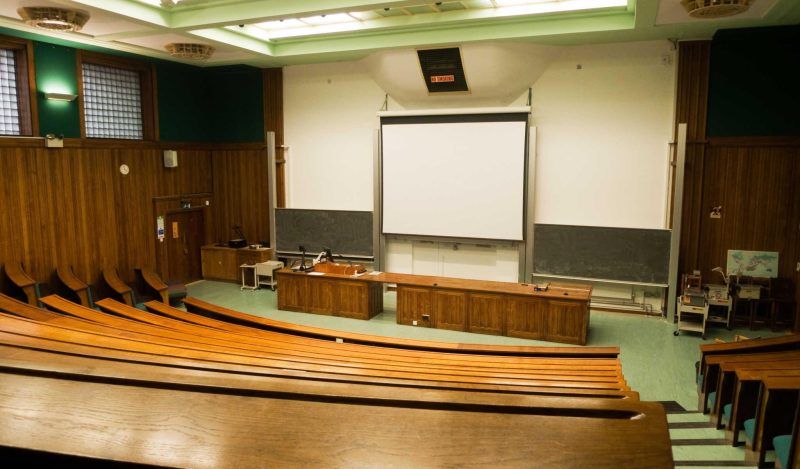It turns out that, when it comes to teaching, Thomas Wolfe was wrong: You can go home again.
And yes, I’m aware that by following up my title with that opening line, I’m guilty of mixing literary allusions. Somehow, I don’t think Messrs. Wolfe and White would mind. Both of the stories I’m referencing are about returning, about attempting to regain something that has been lost.
So is mine.
In my case, what has been lost over the past (nearly) three years is my sense of identity as a classroom teacher at the college level. The pandemic and our collective response to it changed the way I do (or did) almost everything, mostly not (in my view) for the better.
Fortunately, as we stagger back toward some semblance of normalcy, I have been able to resume many of my former practices—to regain, as Wordsworth might say, my lost innocence, tempered by hard experience.
In other words, I might not be going back entirely to the way I did things before—but mostly I am. I plan on keeping a few of the strategies I learned during the shutdowns while bidding a not-so-fond farewell to others.
Where I’ve been
Before I get to those lists, I need to provide a brief history of the pandemic response at my institution—and my response to that response. This is intended to be a purely factual account, without judgment or commentary. It’s just that, since policies varied widely from state to state and even institution to institution, you have to know what I’ve done to understand what I plan to do moving forward, and why.
During the pandemic, my state was more “open” than most. Of course, like the rest of the country, Georgia shut down all its campuses, including mine, on March 13, 2020, and finished out the semester fully online. We remained fully online that summer, too.
In the Fall, state and system leaders decided to “reopen” our campuses—but very, very cautiously. I’m not sure every institution in the state did it the same way (I actually think there was some leeway), but mine decided to allow only one-quarter of the class roster to be in the room together, so students could properly “social distance.”
That meant in my writing classes, capped at 24, I could meet with six students at a time. In my literature classes, with a cap of 30, it was seven or eight. And since we met twice a week, it took me two weeks to see the entire class.
What to do in that situation? I couldn’t give the same lesson four times, because that meant I would cover only about a fourth of the course material over the 15-week semester. Nor did it seem fair to give each group a different lesson.
What saved me was that, during the time the campus was fully closed, I had created a complete set of online modules for each course, consisting mostly of recorded lectures using voice-over PowerPoint. I simply posted those modules on our learning platform—essentially treating each class as if it were online—and used our bi-weekly meetings mostly for small group discussions and one-on-one conferences.
Basically, I adopted a version of the “flipped classroom,” where most of the instruction was done outside of class and class time was devoted ostensibly to more “in-depth” learning.
I have to say, it worked reasonably well. I don’t think the students missed out on any important information, thanks to the recorded modules, and I believe there was some benefit to the conferences and discussions. In fact, it worked well enough that, the following Fall, 2021, when the campus was completely open and classrooms were once again full(ish), I continued to use much the same strategy.
It just didn’t seem to work as well for entire classes, as opposed to small groups of six or seven. Also, I missed actually teaching—standing up in front of students and directly communicating information. That, the performance aspect, has always been my favorite part of teaching, what drew me to it in the first place.
More importantly, I began to sense that students WERE missing something—that the old way had been better. During the time when it wasn’t possible to do it the old way, I had developed a decent strategy for coping. But now that it WAS possible—well, I found myself wanting to go back.
So beginning this academic year, I did—mostly. As I said, I’ve kept a few things from the pandemic semesters, but I’ve gotten rid of many others and for the most part have gone back to the way I taught for more than three decades. Here’s a short, incomplete list of the things I’ve kept, those I’ve gotten rid of, and those I’ve gone back to.
What I’ve kept
Perhaps the best thing to come out of the pandemic semesters for me was a new facility with our online student learning platform. I had previously used it mostly to post syllabi and other documents and to make the occasional announcement. But over the months when we were meeting not at all or only in small groups, I had to use it for nearly everything: tests, papers, and quizzes, course content, and even reading assignments.
Now that we’re all back on campus together, I can provide the course content in person. But it’s still convenient to use the learning platform for other things, particularly those that take up class time unnecessarily, like reading quizzes and open-ended written discussion questions.
I will also continue to have students submit their essays online and grade them online. Most of my colleagues were doing that long before the pandemic, but I was a late adopter. I enjoyed holding students’ essays in my hands and grading with a pencil and swore I’d never change. But of course I did, out of necessity, and now that I’ve seen firsthand how convenient it is, I won’t go back.
What I’ve gotten rid of
After we returned to campus full-force in Fall 2021, I continued posting all my lectures online even though I was also covering that information in person.
My reasoning was that students had been traumatized by lockdowns, loneliness, illness, and fear, so anything I could do to help alleviate some of their anxiety was well-warranted. Also, a small but not insignificant number were still getting sick, often missing a week or more at a time. This way, they could keep up even if they couldn’t be in class.
It was probably during the second semester of that academic year, Spring 2022, that I began to suspect many students were just taking advantage of the situation. Most weren’t sick—they just didn’t want to come to campus, which defeated the purpose of holding in-person classes.
So this year, I stopped posting my lectures online. If students are taking my class on campus, and they want to learn all the material and succeed in the course, they need to attend in person as much as possible—preferably every day.
In other words, I have basically ditched the “flipped classroom” model. I’m sure it works for some people, but not for me. When I was allowed to meet with only six or seven students at a time, it was the best we could do. Some decent discussions came out of it, and I was able to make some nice personal connections with students.
But as class sizes have gone back to normal, those benefits have been offset by the awkwardness and inconsistency of allowing students to drive the agenda. Call me old-fashioned—I’m fine with that—but I’ve decided to retake control of my classes and drive the agenda myself.
What I’ve gone back to
I could probably sum up this section in a few words (though of course I won’t): I’m going back to mostly lecturing, with a healthy dose of in-class discussion, hands-on activities, and one-on-one interactions. In other words, the way I’ve always done things, except perhaps with a little less lecture and a little more of the other stuff.
Back in the 1990s, with the onset of the “teaching and learning revolution,” we were told that professors must no longer see themselves as “the sage on the stage” but should instead strive to be “a guide on the side.” I more or less bought into the idea at the time, even though I wasn’t entirely sure what it meant. But it sounded good, like something I should probably aspire to—especially since, in those early days, I often felt like a bit of a fraud, anyway.
Since then, I have learned that, while there certainly are times to “guide on the side,” there is absolutely nothing wrong with being a “sage on the stage.” The fact is, compared to my students, I am indeed a sage; the classroom is nothing if not a stage; and good teaching is and always will be a form of performance art.
So, yes, I have removed myself from the New-Agey circle of desks in the middle of the classroom and gone back to the lectern—and it feels good. It’s where I belong.
I believe, in the long run, my students will benefit, too, as over time I wean them from the spoon-feeding we have all been doing during the pandemic. We may not have had much choice, but it was not good for them. It has made them lazier, more entitled, and less capable of coping with the normal stresses of college life, such as studying for tests and meeting deadlines. I can’t imagine that will serve them well in their lives after college.
Published under a Creative Commons Attribution 4.0 International License
For reprints, please set the canonical link back to the original Brownstone Institute Article and Author.









